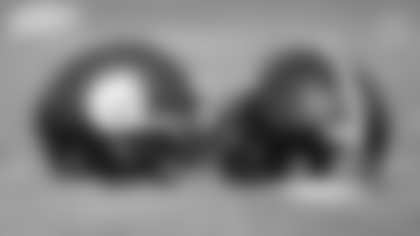Let's get to it:
JEMARE WILLIAMS FROM STERLING HEIGHTS, MI: I have been defending Mike Tomlin's decision to go for the first down instead of kicking the field goal late in the game vs. the Cowboys. The Steelers special teams were not good against the Cowboys: a blocked extra point, another of Chris Boswell's attempts was almost blocked, and there were other special teams miscues. I have been reminding people how Chuck Noll made a similar decision when his special teams were not good one particular Sunday, but he had a good defense. Can you please remind your readers of that particular Sunday, because I am sure you can do it much better than I can?
ANSWER: Yes, Chuck Noll made a similar decision, and the particular Sunday to which you are referring was Jan. 18, 1976, the date of Super Bowl X, during which the Steelers were rather heavily favored to defeat Dallas. I will list the Steelers special teams mistakes that led to the decision Noll made with 1:28 left in the fourth quarter and the Steelers protecting a 21-17 lead:
• On the opening kickoff, Preston Pearson and Thomas Henderson ran a reverse on the return with Henderson taking the handoff and gaining 53 yards.
• On the Steelers' first punt attempt of the game, Bobby Walden fumbled the snap, and his recovery gave the ball to the Cowboys at the Pittsburgh 29-yard line. On the next play, Roger Staubach hit Drew Pearson with a 29-yard touchdown pass to give Dallas a 7-0 lead and a shot of confidence.
• On a fourth-and-2 from the Cowboys 36-yard line, Noll goes for a first down instead of attempting a field goal. The pass is incomplete.
• Walden's next punt travels 32 yards.
• Gerela misses a 36-yard field goal attempt to the left just before the end of the first half. Dallas leads, 10-7.
• On Walden's first punt of the second half, he barely gets the kick off, and it travels 34 yards.
• Gerela misses a 33-yard field goal, wide to the left.
• Walden's next punt travels 34 yards.
• Dave Brown fumbles a Mitch Hoopes punt, and J.T. Thomas recovers for the Steelers at their 17-yard line.
• After a 64-yard touchdown pass from Terry Bradshaw to Lynn Swann, Gerela misses the extra point.
So it's 21-17, and after Gerry Mullins recovers an onside kick attempt, the Steelers have the ball at the Dallas 42-yard line with 1:47 left. On first down, Franco Harris loses 2 yards. On second down, Harris gains 2 yards. On third down, Rocky Bleier gains 1 yard. That makes it fourth-and-9 from the Dallas 42-yard line with 1:28 left, and the Cowboys are out of timeouts. Since the clock will stop on the change of possession, Noll could have had Walden punt and the best the Cowboys likely end up with is a touchback. But since he had no confidence in his special teams ability to execute a punt, he ordered another handoff to Bleier, which gained 2 yards. The Cowboys took over at their 39-yard line with 1:22 remaining.
Dallas would gain a first down at the Pittsburgh 38-yard line, and then Staubach, under heavy pressure threw incomplete for Drew Pearson. Then he threw incomplete in the end zone for Paul Howard. His next pass was to Pearson in the end zone, and it was intercepted by safety Glen Edwards. Time for the trophy presentation.
In the official NFL Films account of the game, the script written for John Faccenda that was approved by the Steelers, stated that Noll didn't trust his special teams to execute a punt on fourth-and-2 and instead opted to turn the game over to his great defense.
SHAWN FRANKLIN FROM JOHNSTOWN, PA: How many times did the Steelers get stuffed on third-and-1 or fourth-and-1 vs. Dallas?
ANSWER: In the second quarter, the Steelers failed on a third-and-1 and then a fourth-and-1 on back-to-back plays. Anthony McFarland was stopped for no gain on third down and Benny Snell was stopped for no gain on fourth down. Then there was the fourth-and-1 in the fourth quarter where James Conner tried to run around left end.
ISRAEL PICKHOLTZ FROM ASHKELON, ISRAEL: Has there been a change in the rule that allows a pass interception in the end zone to be brought out to the 20-yard line? If not, why did Minkah Fitzpatrick bring the ball out instead of taking the free 20 yards?
ANSWER: Minkah Fitzpatrick has scored three defensive touchdowns in his first 22 games with the Steelers, one of which was a 96-yard interception return. He is a dynamic playmaker and coaches typically don't want to harness an individual with those skills and that record of success. It was a split second decision and this time it didn't work. If he brings one out of the end zone for a big gain the next time, I doubt there will be any complaints. What was costly was the penalty for an illegal block in the back that nullified Fitzpatrick's modest return and put the ball at the Pittsburgh 1-yard line.
LON BOLLENBACHER FROM GROSSE POINTE, MI: I have been impressed that we have four rookies making meaningful contributions despite the fact that we did not have a first-round pick. Have there been other years in recent memory where so many rookies played as much and as well?
ANSWER: Recently? In 2017, T.J. Watt, JuJu Smith-Schuster, and James Conner were picked in the first three rounds of the draft and all made the Pro Bowl by the end of their second NFL seasons.
DON HEISER FROM KANNAPOLIS, NC: After Sunday's win, Mike Tomlin now has gone 14 consecutive years without a losing season. What other NFL coaches have gone at least 14 seasons without a losing record?
ANSWER: Mike Tomlin tied Marty Schottenheimer for the NFL record for most years without a losing season at the start of an NFL career.
JAKE STEED FROM COEUR D'ALENE, ID: It was awesome to watch Chris Boswell make a 59-yard franchise record field goal last Sunday afternoon. Can you tell us what was the previous record and if it made a difference in the game? Also while we're on the subject what is the most memorable field goal made or missed of your tenure?
ANSWER: The previous record for the longest field goal in franchise history was 55 yards, and it was shared by Kris Brown and Gary Anderson. Brown's kick was against Kansas City on Oct. 14, 2001 at Arrowhead Stadium. The Steelers defeated the Chiefs, 20-17, but Brown's kick came in the second quarter and gave the Steelers a 6-0 lead. Anderson's kick came against the Chargers on Nov. 25, 1984 at Three Rivers Stadium. The Steelers won that game, 55-24. The most memorable field goal attempt, made or missed, of my professional career came in the 2005 AFC Divisional Round against the Indianapolis Colts in the RCA Dome. Mike Vanderjaht's attempt from 46 yards to tie the game with 21 seconds left was wide right.
JERRY WEST FROM SOUTHPORT, NC: I seem to remember years ago that when a defensive player jumped offside he could get back and no penalty was called if the ball was not snapped and no offensive player was contacted. Was this ever true, or maybe I'm just getting senile?
ANSWER: That is true, and it's still true but the offensive players have been taught when a defensive player breaches the neutral zone, they should raise up because that will draw a 5-yard penalty on the defense for encroachment. That dates back to the 1980s when crowd noise would make it difficult for visiting offensive linemen to hear the snap count, and so defensive linemen would flinch or mimic coming across the line of scrimmage to get the offensive linemen to jump and incur a false start penalty. The NFL ultimately decided that was unfair to visiting teams, and so the rule was modified to penalize the defense for using this tactic. In Dallas on Sunday, a Cowboys defensive player breached the neutral zone, and Maurkice Pouncey snapped the ball to Ben Roethlisberger, who then took a shot down the field knowing he had the 5-yard penalty in his back pocket in case the play failed. But because Dallas was the home team and there was no crowd noise, that play was allowed to continue. Had Pouncey not snapped the ball, and if nobody on the Steelers offensive line moved, the defender could have gotten back onside and avoided a penalty.
ALDO GALVAN FROM CUERNAVACA, MEXICO: Was Joe Haden returning punts in the last game? Why was that?
ANSWER: Here was the situation: It was fourth-and-1 from the Dallas 30-yard line at the end of the first quarter. During the television timeout that accompanies the expiration of the quarter, the Cowboys offense gathered on the sideline around their coaches and never committed to sending the punt team onto the field. Because of that, the Steelers left their defense on the field in case Dallas elected to gamble and go for the first down. When the ball was put in play by the referee, the Cowboys rushed their punt team onto the field, and rather than risk a penalty for too many men the Steelers just left their defense out there. Joe Haden is capable of catching a punt, and so he became the deep man and made a fair catch.














